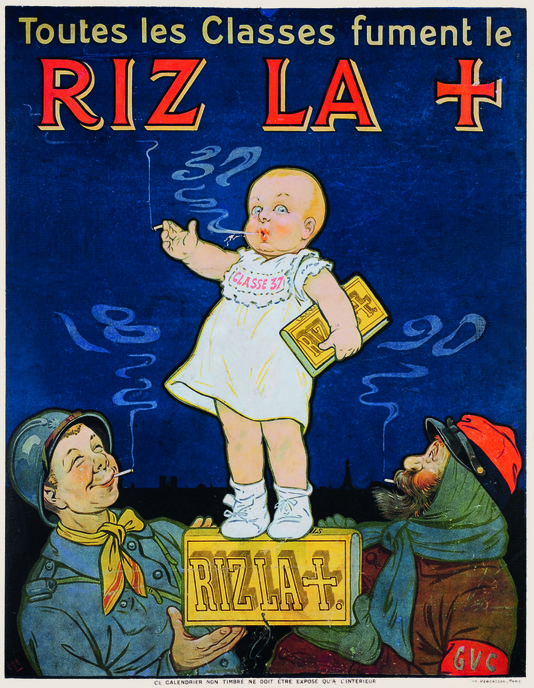
I’m catching up on some reading and came across this article written by Tracy Follows: “Cannes Lions: will advertising ever again be about the people it serves?”.
At first I didn’t take any special notice at the title, I might have been paying more attention to the Cannes Lions part of it. I was mostly nodding to myself in agreement at several points made as I was reading. And then towards the end the title question appears again and that’s when I really took notice:
“The question for the future, then, is this: will advertising ever again be about the people it serves?”
You might think I’m being too concerned with semantics, and you might be right. I may well be focusing on a different definition of the word service than Tracy had in mind. In any case, I thought: “Wait a second, when has advertising ever been about serving the people it’s made for? Who does advertising serve?”
Just to be clear, I enjoyed the article and I agree with Tracy’s interesting points made about creativity vs. media and technology, about the fascination of the industry with technology at the detriment of creativity or better understanding people.
At the same time I can’t help but thinking there is a slight leap made in the article that jarred with me. It’s related to the word serving, and the notion of service. I went to read the Wikipedia article about advertising for a quick history overview, to make sure I wasn’t missing anything obvious about the origins and history of the practice.
I picked the image above from there, apparently one of the first still existing examples of printed branding and advertising, for a needle shop in Song Dynasty China, between 927 – 1270. It seems like an old enough example to suit my purpose. Along with the rabbit brand logo representing the Liu family name, the text above and below reads:
“We buy high quality steel rods and make fine quality needles, to be ready for use at home in no time”
Who does this serve, first and foremost? I say it serves the Liu family needle shop. Advertising serves the client, the company advertising or promoting their products and services. It doesn’t serve the consumer, not first at least. I don’t think it ever has, so it would be difficult to have it be about that again.
Advertising, the modern 20th century style of it in particular, is about creating demand and persuading people they want or need something, whether they actually need those things or not, or whether it’s useful or not.
Both World Wars and cigarette advertising are famously what allowed the advertising to grow into what it is has become today. I remember visiting the Weapons of Mass Communication exhibition at London’s Imperial War Museum years ago, which was very interesting in that regard. With what we know about the ill-health effects of smoking nowadays, I find it tough to say those ads were serving the people they were destined for.
I absolutely agree it’s ideal if advertising is made for the people it is destined to. It is better when ads are concerned with real people, their lives, motivations, feelings, concerns, etc. In rare cases I’m even inclined to believe advertising serves the consumers as well as the advertiser.
It is probably part of the reasons most people dislike advertising: everybody knows it’s trying to have them do something, most often buy something – possibly against their will. Nobody likes the impression of being influenced or manipulated against their will.
I’m writing all this because I believe it is possible for advertising to be relevant, entertaining, and even useful to the people it is destined for. I think that’s an important point the heart of Tracy’s article, and if I’m correct in my understanding I agree. I don’t know if there was a time the industry did a better job at that, but I’m sure it can do better now. I aim to help with that in the work I do with clients, though I admit I don’t always succeed as much as I’d like to.
I also think mass communication can be used to make a positive difference for people. I recently found out about The International Exchange and it’s great to see this type of exciting projects in the world, committed to making a difference with the help of communication professionals.
That said, I’m questioning the distinction of who advertising serves because I think it’s important to be honest and realistic about it. The next question could be: if it serves the advertisers, then how can it serve them better by being for the people they are targeting?
To finish on a another thought, I particularly liked this definition of service in the Merriam-Webster:
2c. Contribution to the welfare of others.
Going one step further with this definition in mind, if advertising served the people it is targeted to, then how would it influence products and services being developed by advertisers, rather than the other way round?
22/08/2015 update:
In the middle of an unrelated conversation a day after writing this, a friend reminded me that the origins of the verb to serve and servir (we were talking in French) are from the latin servire, literally “be enslaved”, related to servus “slave”. The meaning then extended to being a servant later on, and then even later into the figurative kind of meaning I used for this post.
Taken in this sense, the title also makes for an interesting question to ponder: Who is enslaved to advertising?


